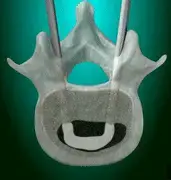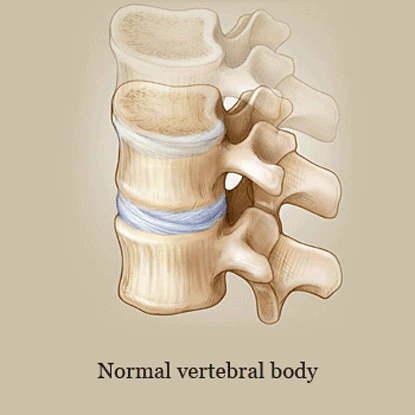
The other day, I had a conversation with a concerned son about his mother’s back. She had suffered a vertebral compression fracture, and he wanted to know the best treatment option. He had spent hours researching kyphoplasty and vertebroplasty online, only to come across conflicting opinions. His goal was simple—ensure his mother received the best possible care. As a doctor specializing in back pain treatments, including both procedures, I’m familiar with this confusion. Let’s break down the differences between kyphoplasty and vertebroplasty to help others in Arizona who might be in a similar situation.
What Are Vertebral Compression Fractures?
Before diving into the procedures, it’s important to understand what we’re treating. A vertebral compression fracture occurs when the bones in the spine collapse. This can lead to severe back pain, decreased mobility, and even changes in posture. These fractures are most often caused by osteoporosis, but can also result from trauma or cancer. Both kyphoplasty and vertebroplasty are minimally invasive procedures designed to stabilize these fractures and reduce pain.

What Is Vertebroplasty?
Vertebroplasty has been used since the 1980s to treat compression fractures. The procedure involves injecting medical-grade bone cement directly into the fractured vertebra. The cement hardens within minutes, stabilizing the bone and relieving pain. Vertebroplasty is usually performed under local anesthesia, but sedation may be offered to keep the patient comfortable.
Advantages of Vertebroplasty
- Immediate pain relief in most cases.
- Stabilizes the fractured vertebra, preventing further collapse.
- Minimally invasive with quick recovery time.
Potential Drawbacks of Vertebroplasty
- It does not restore height to the collapsed vertebra.
- There’s a risk of cement leakage into surrounding areas.
- It doesn’t always address the underlying osteoporosis or bone health.

What Is Kyphoplasty?
Kyphoplasty, introduced in the 1990s, builds upon vertebroplasty with an additional step. In kyphoplasty, a balloon is first inserted into the fractured vertebra and inflated. This creates space and can restore some lost height in the vertebra. Once the space is created, bone cement is injected into the cavity, similar to vertebroplasty.
Advantages of Kyphoplasty
- Restores some height to the compressed vertebra.
- Reduces the risk of cement leakage compared to vertebroplasty.
- Can improve posture and relieve pain.
Potential Drawbacks of Kyphoplasty
- It is slightly more complex and may take longer to perform.
- Slightly more expensive than vertebroplasty.
- Like vertebroplasty, it doesn’t address osteoporosis directly.
Comparing the Two Procedures
Let’s break down the differences between vertebroplasty and kyphoplasty to help make the choice clearer.
- Restoring Vertebral Height:
Kyphoplasty offers an advantage in restoring lost height in the spine. For patients with significant vertebral collapse, kyphoplasty may improve posture and reduce deformities like a hunchback appearance. Vertebroplasty does not offer this benefit. - Cement Placement:
In vertebroplasty, bone cement is injected directly into the fractured area without prior preparation. In kyphoplasty, the balloon creates a cavity before the cement is injected. This added step reduces the risk of cement leakage, which can be a concern with vertebroplasty. - Pain Relief:
Both procedures are effective at relieving pain caused by vertebral compression fractures. Most patients report immediate or rapid improvement following either procedure. In both cases, pain relief typically lasts long-term, helping patients return to daily activities. - Risks:
Both vertebroplasty and kyphoplasty carry similar risks, such as infection, bleeding, or reactions to anesthesia. However, the risk of cement leakage is lower with kyphoplasty, due to the balloon cavity. - Complexity and Cost:
Kyphoplasty is a more complex procedure and typically costs more than vertebroplasty. This is largely due to the additional steps involved. However, for patients needing height restoration or more stability, the added expense may be justified.
Which Procedure Is Best for You or Your Loved One?
When deciding between vertebroplasty and kyphoplasty, several factors come into play, including the severity of the fracture, the patient’s overall health, and the surgeon’s recommendation. For example, if restoring spinal height is important due to the degree of collapse, kyphoplasty might be the better option. On the other hand, for simple fractures with minimal collapse, vertebroplasty could be more appropriate.
Why Arizona Residents Should Consider Kyphoplasty or Vertebroplasty
Living in Arizona, with its year-round sunshine and active lifestyle, many seniors face challenges from osteoporosis and fractures. Whether hiking in Sedona or simply enjoying a game of golf in Phoenix, vertebral compression fractures can limit daily life. Both kyphoplasty and vertebroplasty offer quick recovery times, allowing patients to return to their normal activities faster than traditional surgery.
At Red Butte Pain Solutions, we understand that choosing the right procedure can be overwhelming, especially when dealing with conflicting information online.
It’s essential to consider your unique situation and speak with a doctor who specializes in treating back pain and fractures. Both kyphoplasty and vertebroplasty are effective, and our goal is to ensure you receive the best possible care tailored to your needs.
We have extensive experience helping Arizona residents with both kyphoplasty and vertebroplasty. Whether you’re in Chandler, Tempe, or anywhere else in Arizona, we’re here to guide you through the process and help relieve your pain.
Understanding: Bringing Clarity and Confidence
The patient’s son left with a clear understanding of both procedures. We discussed the benefits of kyphoplasty, especially for his mother, whose spine had significantly collapsed. He felt relieved to finally have clarity and confidence in the best option for her care.
If you or a loved one are considering kyphoplasty or vertebroplasty, it’s important to understand the benefits of each and consult a pain specialist who can guide you.
For expert care and compassionate guidance in Arizona, contact Red Butte Pain Solutions. We’ll help you determine the best path to recovery and get you back to living pain-free as soon as possible.
Call 602-633-4334 or schedule your consultation online.
We proudly serve patients from Mesa, Chandler, Ahwatukee, Maricopa, Casa Grande, Sun Lakes, and Laveen.
